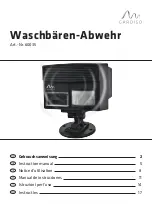
1
FACTORY SET POTS–
DO NOT RESET
ZONE 1 AND ZONE 2
TROUBLE
INDICATORS
LOCAL AUDIBLE
BUZZER
DISCHARGE DELAY
SELECTION
SWITCH S101
SPECIFIC
SUPERVISORY
TROUBLE
INDICATORS
INDICATORS
ON FRONT COVER
(VISIBLE WITH
DOOR CLOSED)
SERVICE SELECTION JUMPER
PLUG P72 (LOCAL) OR P12 (RELEASE)
2A AC INPUT
CIRCUITBREAKER
PR-24 POWER PLUG
GROUND DISCONNECT PLUG
BATTERY CHARGER
OPERATING
INDICATOR
FACTORY SET POT–
DO NOT RESET
BATTERY FAULT
INDICATOR
MANUAL SWITCHES
GROUND FAULT
INDICATOR
FUSES
BATTERY PLUG
POWER SUPPLY
PR-24 MODULE
BATTERIES
MANUAL DISCHARGE
SELECT DIPSWITCH
PREDISCHARGE/DISCHARGE
SELECT DIPSWITCH
ABORT STATION
OPERATION
SELECTION
DIPSWITCH
OPTION DIPSWITCHES
INTRODUCTION
The
SIEMENS
Model CP-2ER Control Panel is a two-zone
local control unit which meets the requirements of NFPA
72 Local for a two-zone releasing device panel approved
in accordance with NFPA 12A, 13, and 2001 for cross zone
protection. The two initiating zones, Zone 1 and Zone 2,
may be connected for either Class A or Class B operation.
The two zones are arranged so that both must be acti-
vated in order to discharge the agent automatically into the
protected area.
As shipped from the factory, the CP-2ER is set to meet the
NFPA 72 requirements; that is, an alarm in either of the two
initiating zones causes the general alarm to sound. Once
the general alarm is silenced, an alarm in the other initiat-
ing zone causes the general alarm to sound again.
To set the CP-2ER to meet NFPA 12A, 13, or 2001 require-
ments for a releasing panel, place the
SERVICE SELEC-
TION
plug in position P12 (Release). With the plug in this
position
,
both a general alarm associated with the first ini-
tiating zone actuation and a predischarge/discharge alarm
with actuation of the second initiating zone will sound. The
position of the plug in P12 voids the NFPA 72 Local listing
since the general alarm circuit silences upon actuation of
the second initiating zone.
The Control Panel provides for the external connection of a
supervised manual discharge station for agent release, as
well as for several other supervised input and output func-
tions. Essentially, every supervised feature has its own sepa-
rate fault indicator for ease of troubleshooting the system,
should a fault occur.
Displayed through the front cover are the usual visual indi-
cators for power, system alarm, and system trouble, as well
as several additional specific function indicators. Within the
Control Panel are a fire alarm
RESET/LAMP TEST
switch,
an
ALARM SILENCE
switch, a
SUPERVISORY SILENCE
switch,
a
TROUBLE SILENCE
switch, and a
RELEASE
DISCONNECT
switch. The separate visual fault indicators
are displayed within the panel for all supervised features.
Isolated relay contacts are provided for: System alarm -
DPDT, System trouble - SPDT, Predischarge/discharge -
SPDT and SPST (normally open). For information regarding
functional options. refer to the
OPERATION
section.
Figure 1
Model CP-2ER
Technical Manuals Online! - http://www.tech-man.com






























